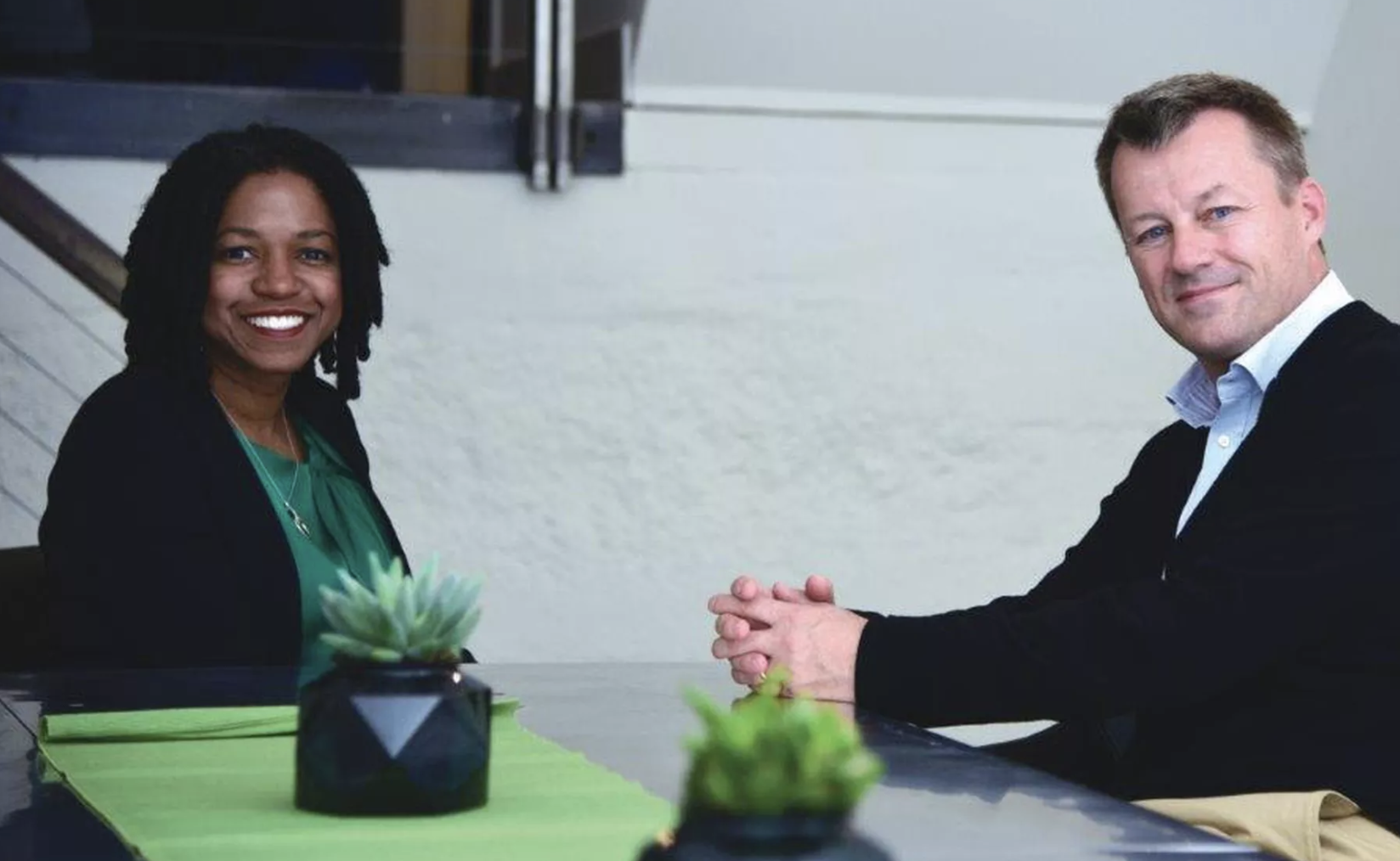The heads of TaskRabbit and Ikea Group: Stacy Brown-Philpot (left) and Jesper Brodin, Ikea
A long-time customer of TaskRabbit I’ve hired TaskRabbits to haul goods for Goodwill donations, to fix our plumbing when I broke the garbage disposal, pack up and unpack my apartment when we moved into our new home, build our baby’s crib — and the list goes on. There are many customers like me who love the convenience of hiring someone local to simply come to your house and help you with things you either can’t do yourself, or don’t want to do. I’ve had only very positive experiences with TaskRabbit.
News broke this week that Ikea — the Swedish furniture maker that made revenue of over $35 Billion last year — purchased TaskRabbi (a nine year old start-up). TaskRabbit has 60 full time employees and 60,000 workers who use the platform to get jobs. TaskRabbit was started by husband and wife team Kevin and Leah Busque and raised $50 million dollars since its inception. It was reported that the current CEO Stacy Brown-Philpot will remain as CEO along with the staff, independent of Ikea.
I think this was a fabulous move from Ikea. From a customer perspective it makes perfect sense why Ikea would want TaskRabbit – and we have a lot to learn about how every company can lean on the gig economy to improve customer’s lives. Here are three lessons learned.
Adding Value To Customer’s Lives Through Hands-On Help And Education
When you sell someone a product, it is better to actually teach them how to use the product – and get the most value out of it. Amazon gets that – and has made a big push for education as part of their premium customer experience. Amazon is now teaching customers how to make their homes smart.
Ikea can now use TaskRabbit to spend more time with customers in their homes. Ikea can help customers build furniture – and a variety of related tasks. It seems to be more profitable for Ikea to ship these large cases of disassembled pieces all over the globe, and have local gig economy workers put it together in the customer’s home. And what other services will Ikea now be able to help customers with in the future? In fact I could have used an Ikea TaskRabbit to install crown molding in my house. Companies can think differently about their brand – and their category. For example the mentality is, “Today we are a furniture company, but tomorrow we offer a full range of products and services.!” Great brands shift categories fluidly.
People Still Need People
If our entire society had an anxiety issue about one particular thing, it is the loss of jobs due to robots and automation. Many of us talk about automation – how artificial intelligence will destroy the workforce and humanity — but that’s simply not reality today (see Chelsea Handler video about robot blunders). On a related note, in this Freakanomics podcast called “How safe is your job?” the show talks about how not all jobs will not be replaced by robots including house cleaning, dog walking, beauty services — things that require more human qualities than a robot can provide. There are some jobs that will go away as a result of automation. But clearly not all jobs; particularly the jobs that involve educating or building something for another person. For example my baby’s crib was delivered in pieces. The last thing a pregnant woman wants to do is assemble a crib! Pregnant and tired, I called on TaskRabbit who did it for me.
Empower Customers To Get Creative Using Their Personal Devices
I recently wrote about how marketers can use the new augmented iPhone capabilities to engage with customers to create rich experiences.According to recode, Ikea unveiled an augmented reality app for the iPhone, called “Ikea Place.” Customers today can now use Ikea’s apps to create a vision for what their room will look like. Forget interior decorating, any customer today can be their own interior decorator using Ikea’s augmented reality app. Not only that but those customers can create a vision and actually get help building the furniture. Many people stay out of Ikea because they simply don’t have the time and energy to manually put furniture together. Now those customers will get themselves to the store to enjoy Ikea’s low prices.
The gig economy should be part of every company’s growth strategy. How can we lean on the gig economy to make customers’ lives easier and better? This is a brilliant move from Ikea we can all learn from.
Blake Morgan is a customer experience futurist, author of More Is More, and keynote speaker. Sign up for her weekly newsletter here.
This was first published on Forbes.com

